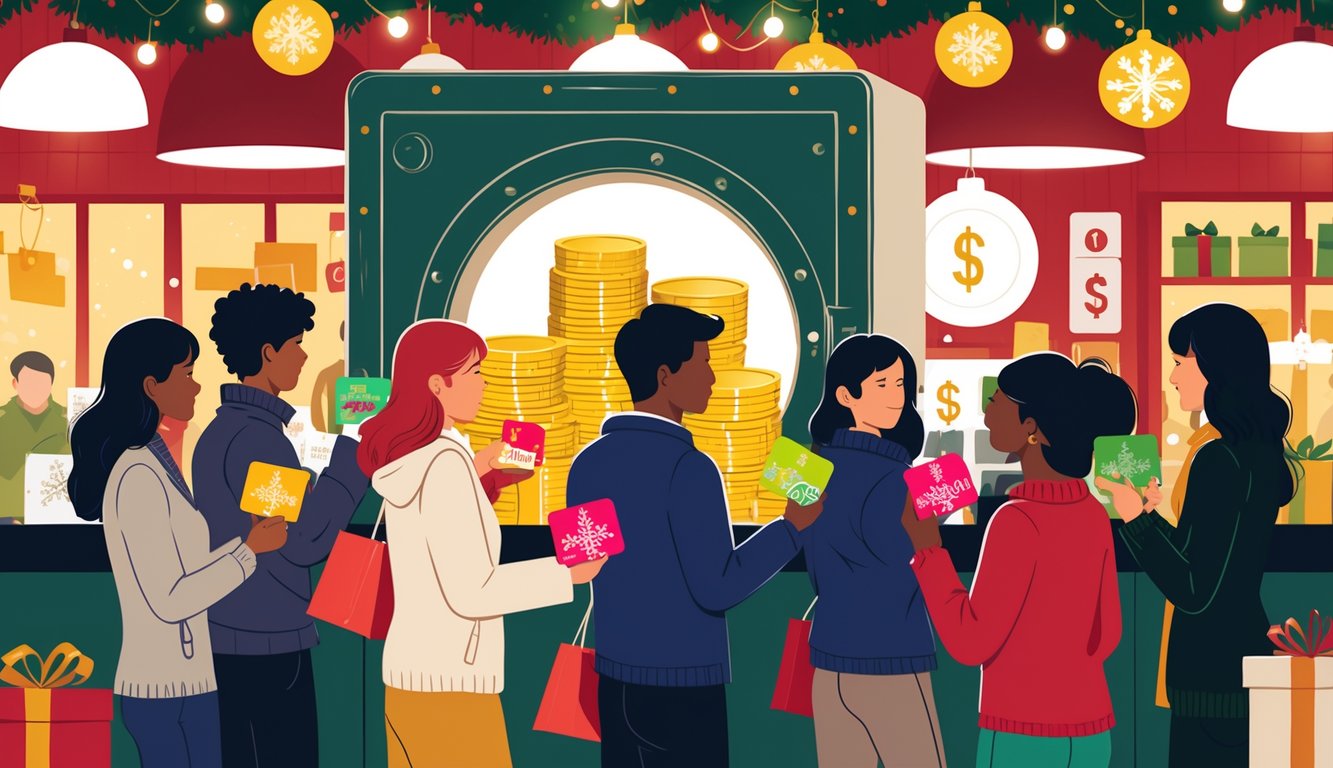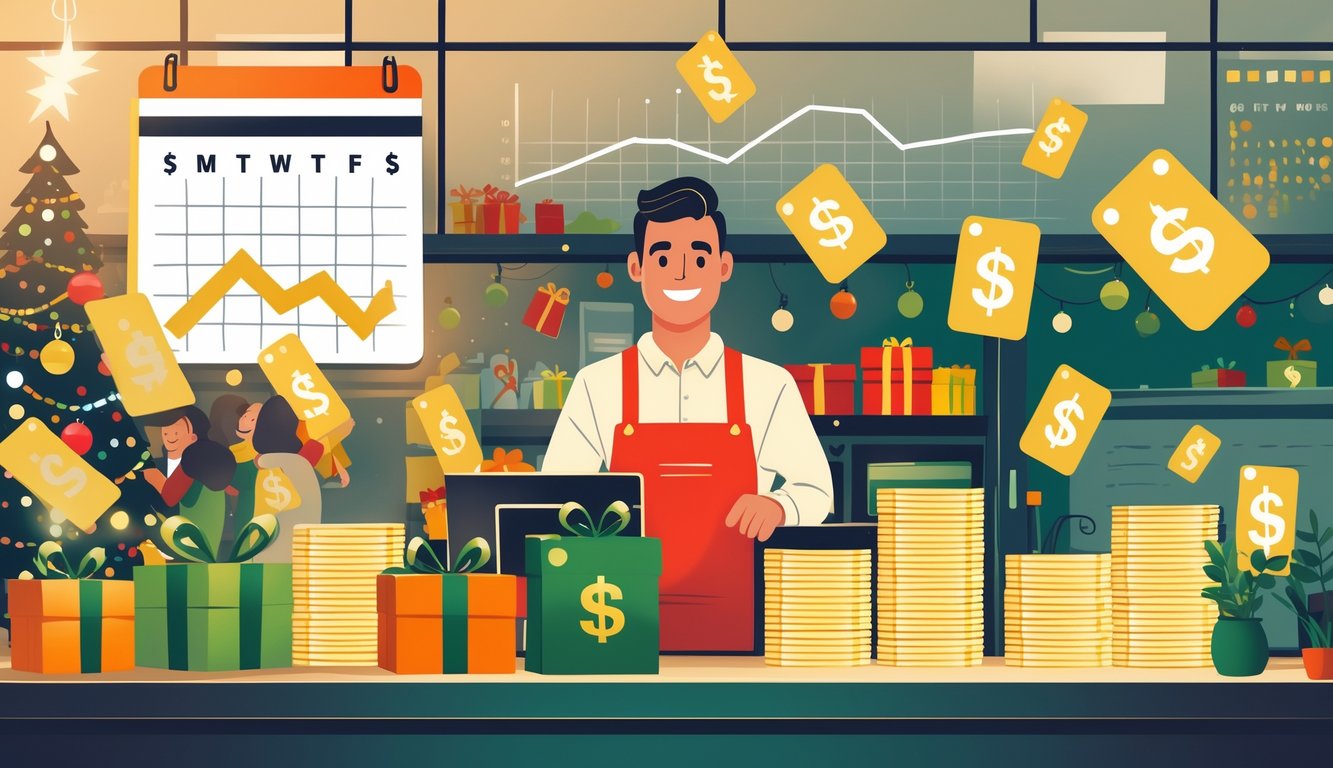
Gift Cards as Interest-Free Loans to Retailers

Load up a holiday gift card and your money just vanishes into the retailer’s abyss—nothing leaves the shelf, but the store gets paid. Retailers love gift cards for exactly that reason: it’s free money up front, no product exchanged, just some numbers in a database and a weird trust in the system.
How Retailers Benefit From Prepaid Revenue
It’s so obvious. I bought a $100 gift card for my nephew—his birthday’s right before Christmas, so double trouble—and the second I paid, the store pocketed that cash. No inventory moved. Just instant prepaid revenue. Starbucks? They’re sitting on over a billion dollars in unused card balances, and you can check their SEC filings if you don’t believe me. All logged as “deferred revenue.”
Retailers treat these funds like a mini-bank. You’re basically giving them an interest-free loan and getting a plastic rectangle in return, which you might never use. They can record revenue before they even hand over a latte or candle. Plus, tons of cards get lost or forgotten—no one likes to admit it, but it’s true.
Financial Advantages of Deferred Use
It’s kind of wild. Those balances just sit there for months, earning float. Big retailers invest or use that cash, and the customer forgets about it. Wall Street Journal said in 2023 that about 10% of all gift card value goes unused every year. That’s $10 wasted for every $100 spent, multiplied across millions of cards.
I once cornered a Target exec at a conference (awkward, but whatever) and he said they treat these totals as “interest-free working capital.” Imagine running your own shop—customers pre-pay in December, show up in March, or never show up. Meanwhile, you get to invest the money, spruce up the place, or pay off debts, no interest owed. It’s perfect—until someone asks where all the unspent socks went.
The Expanding Gift Card Market
It’s hilarious how people act like gift cards are just a backup plan. Meanwhile, the market keeps exploding and nobody notices the weird details. You’d think it’s just because picking sizes is a nightmare, but the numbers say otherwise.
Trends in Consumer Spending on Gift Cards
This one stat made me double-check: by 2028, the U.S. gift card market is supposed to hit $267.3 billion (PaymentsJournal, 2024). That’s bigger than plenty of countries’ GDPs. Every year, more people buy digital cards, not just for holidays. Restaurant cards alone grab a third of holiday sales, but they’re everywhere year-round.
National Retail Federation says almost $30 billion in gift cards changes hands just during the holidays. Digital didn’t slow this down—if anything, it made it worse. I’ve seen people try a new store with a gift card and then overspend. It’s not a fluke; it’s how the system’s built. And yeah, some cards never get spent, which quietly boosts retailer profits if you peek at their books.
Growth of the Gift Card Industry
The digital gift card explosion? It’s real. The “holiday-only” thing is dead. Gift Rabbit says digital gift cards alone are headed for $115.3 billion by 2028. Department stores used to rule, but now discount chains and niche e-commerce sites are fighting for a piece. Even fashion and cosmetics brands are in the mix—seen those influencer “suggested” e-gift cards lately?
Gift cards don’t just mean sales; they’re balance sheet magic. Unused balances look like liabilities at first, but anyone who’s done retail finance knows breakage (the unspent part) eventually turns into profit. My retail clients love how digital gift cards grease loyalty programs and promos—one guy called it “the silent backbone” of his revenue model. He also thinks cauliflower is pasta, so, you know, grain of salt.
Potential Drawbacks for Consumers
So here’s the thing: every holiday season, I’m the idiot panic-buying gift cards at CVS, and every single year, I regret it. Why do these things always have strings attached? One minute you’ve got a crisp $50 card, next minute—bam, $43 left, and nobody can explain why. And the store list? Half the time you can’t use it where you want. Who even keeps track?
Risks of Expiration and Inactivity Fees
I swear, time speeds up when you’re avoiding responsibility. My cousin had a Starbucks card—never used it, then poof, expired. Didn’t even get to sniff a latte. Some cards expire in like, what, six months? Twelve? California apparently bans short expirations, but everywhere else, good luck. I’ve let Target cards rot in my glove box for ages (Target’s chill, no fees), but other places? They start nibbling away a dollar here, two dollars there, just for you being forgetful. That’s the thanks you get.
Saw this Forbes stat—$46 billion in unused gift cards over a decade. Forty-six billion. That’s not a typo. Retailers just keep the cash. I’ve tossed expired iTunes cards, felt like a dope. Where do you even find the rules? Packaging print is microscopic and always appears after you’ve already thrown it out.
Challenges Redeeming Gift Cards
Ever hand over a gift card and the cashier stares at it like it’s a cursed object? I have. Stores close, go bankrupt, rebrand—suddenly your card is useless. Tried calling customer service once, just ended up on hold forever, and then they started talking about some upgrade fee that didn’t even make sense.
Oh, and digital cards? My friend’s Amazon card got eaten by her spam filter. Gone forever. Some sites only let you use the card once, and if you’ve got change left? Congrats, you now own $1.14 in limbo. Shipping and tax? Not always covered. They never tell you that. You end up with these weird leftover balances, and it’s like, why not just buy normal socks and move on?